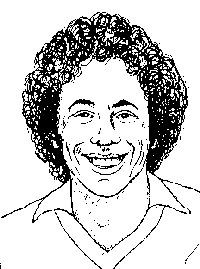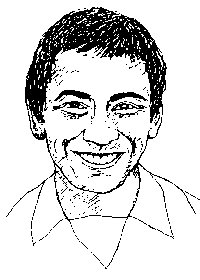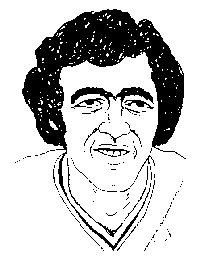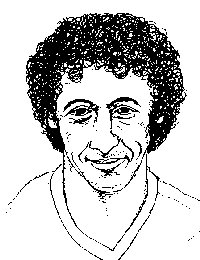In many ways, Allison's most tangible achievement at the club was the development of a strong youth policy, which began to bear fruit just as he left, enabling Terry Venables to enjoy the benefit and much of the credit. The first of the crop to make the first team was Kenny Sansom, who had looked outstanding in the few games he had played after Palace's semi-final defeat, and Venables immediately

| Barry Silkman |
installed him as first choice left back. Cannon moved into the centre alongside Evans, precipitating the departure of Derek Jeffries back up North to Chester, and Peter Wall made up a back four that was the best the club has had. Venables declared his intentions for the future by predicting early on some others of the youth team players likely to break into the first team during the season, naming Neil Smillie, Vince Hilaire, Ian Walsh and Peter Caswell. In addition, Paul Hinshelwood, who had already been converted from a centre forward to a full back in the reserves, was being groomed to take over from Peter Wall. As it was, he came into the side sooner than expected, but as a midfield replacement for his brother Martin.
Yet another change of playing strip saw the adoption of another supposedly continental style, the diagonal red and blue sash across a white shirt replacing the previous design, which was apparently "too drab and dark, especially under floodlights". I don't remember anyone complaining about it, and I suspect that the change had more to with the new manager's commercial instincts.

| Ricky Heppolette |
Venables' obsession with continental football also manifested itself in an exaggerated version of Allison's passing game, which frustrated the fans, with each move being built slowly and deliberately from the back, and possession being paramount. In a way, the departure of the more flamboyant Peter Taylor to Spurs can be seen as a necessary part of the Venables plan, and although the fans were sad to see him go, he was obviously too talented to stay in the Third Division, having already won four England caps, and he went with their blessing. Alan Whittle had left for Orient and David Kemp was soon to move on to Portsmouth, but Venables had already signed a couple of unknown players as potential replacements - the not very loveable rogues, Barry Silkman and Rachid Harkouk. Harkouk was a wayward attacker with an occasionally explosive shot, which earned him the inevitable nickname of 'Rash the Smash', while Silkman was an out and out winger who had fallen out with his last manager at Hereford. John Sillett had wanted him to work on running back, covering and tackling rather than concentrating on attack, principles that characterise that manager to this day at tedious cost to followers of Coventry City.
In contrast to the wonderful start to the 1975- 76 season, early results were rather disappointing and for most of the season it looked as though Palace would end up missing out on promotion once again, although this time the results at home were excellent. In an extremely closely matched division, though, there were rarely less than ten sides within a few points of a promotion place, and Palace were always threatening to put together a string of results, it being widely acknowledged that they were potentially a cut above the rest.
In the F.A.Cup, the first round went to two replays against Brighton, the eventual victory coming by a single goal at the neutral ground of Stamford Bridge, and after a comfortable 4-0 result over non-league Enfield, Palace had to travel to face Liverpool in the third round. This time there were no brash predictions of an upset, but Palace organised themselves well and were considered unfortunate to come away only with a goalless draw, largely thanks to a series of good saves by Ray Clemence. Despite Palace leading 1-0 in the replay, Liverpool eventually went through 3-2, and the fans chorus of "we can concentrate on the league now" was for once a wise thought. By now Venables had added the experienced George Graham to the midfield, enabling Paul Hinshelwood to finally take up his duties at right back, and the reserve team forward Steve Perrin had come in to partner Swindlehurst up front. An experiment with the Indian born Ricky Heppolette proved a flop, though, which meant that Holder and Chatterton kept their places in a reliable, if rather dull midfield. Graham's ability to control the game at his own painfully slow pace served Palace well, and it was his influence which helped to improve their position at the start of new year into fifth place.

| Steve Perrin |
Scoring goals was proving to be somewhat of a problem, with Perrin being too similar to Swindlehurst in his rather lumbering style, and it was the purchase of Jeff Bourne from Derby County which in the end proved to be the season's turning point. The fee for Bourne came from the sale of goalkeeper Paul Hammond to Tampa Bay Rowdies in the North American Soccer League, where he joined Mark Lindsay, and the fact that Venables felt compelled to justify the £30,000 outlay illustrates that the days of the big money signings were way past, and that Ray Bloye was not prepared to invest in the team, despite having enjoyed bigger crowds than most in the Third Division. Bourne came to Palace rather overweight from being out of the team at Derby, but once he was fit he made a crucial contribution to the promotion effort, scoring nine goals in his fifteen games, and complementing Swindlehurst nicely. He inspired Palace's best two victories of the season, 5-0 against Swindon and 4-0 against Sheffield Wednesday, and suddenly promotion became a possibility, if still a slim one.
Venables was livid when a rearranged game at Port Vale was played on a waterlogged pitch, after the earlier fixture had been postponed at very short notice due to illness and injury among the opposition. Vale won 4-1 with George Graham sent off in a bad tempered game, and once again Palace were written off for the season with four games remaining and six points to make up on third placed Wrexham. However, two of the four games were against the Welsh side themselves, and after winning at Chesterfield, and at home to Wrexham and Lincoln City, Palace's final game of the season saw them travelling to the Racecourse Ground in midweek needing to win by two clear goals to even have a chance of going up. Since Wrexham had not lost at home all season, the odds looked very much against Palace.

| Rachid Harkouk |
The manner of Palace's victory that evening is still hard to believe. After Swindlehurst and Perrin had made it 2-0 to Palace, Wrexham woke up and fought back to 2-2, which remained the scoreline until the last minute of the game. When Harkouk scored Palace's third on the stroke of full time, it still didn't seem to matter much to the celebrating Welsh supporters, but straight from the restart, and in injury time, Jeff Bourne - fittingly - made the score 4-2 and completed an unforgettable night. I only wish I could claim I was there, but the elation I felt when hearing the score on the radio must have been magnified in the hearts of those at the game, and many were moved to tears at the remarkable manner of the victory, and at the prospect of promotion from the Third Division, although this was still not certain. Wrexham were completely shattered by the result, and although they could still have gone up at Palace's expense, they lost their final game against the champions Mansfield, and Terry Venables won promotion to Division Two in his first season as a manager, one of the few minor honours he has so far achieved in English football. 